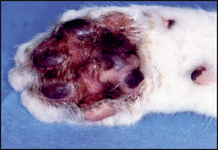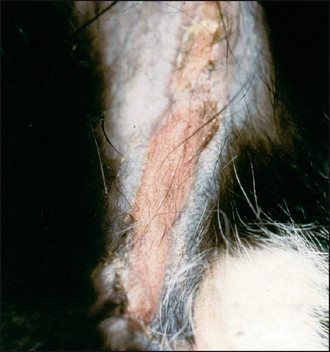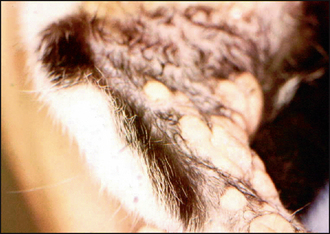36 Feline eosinophilic plaque
CASE HISTORY
In this case the relevant history was:
CLINICAL EXAMINATION
In cats with eosinophilic plaque, the lesions are usually located on the ventral abdomen and medial aspects of the thighs. They appear as circular raised, eroded or ulcerated plaques, ranging from 1 to 2 cm in diameter, but they may coalesce into a large lesion several centimetres in length. Uncommonly, lesions may appear on the feet, which usually present with crusting, exudation, erythema and swelling of the plantar or the interdigital skin (Fig. 36.1).
Other variants of the eosinophilic granuloma complex may be found on the same individual, e.g. ‘linear granuloma’, which is seen as a raised chord-like linear plaque, with a yellowish surface, on the caudal aspect of the thighs (Fig. 36.2). Indolent (rodent) ulcer may also be seen as an area of ulceration on the upper lip. Some individuals may also have lesions on the hard or soft palates.
In this case the clinical examination revealed:
CASE WORK-UP
In the first instance, the following investigations were carried out:
Stay updated, free articles. Join our Telegram channel

Full access? Get Clinical Tree





